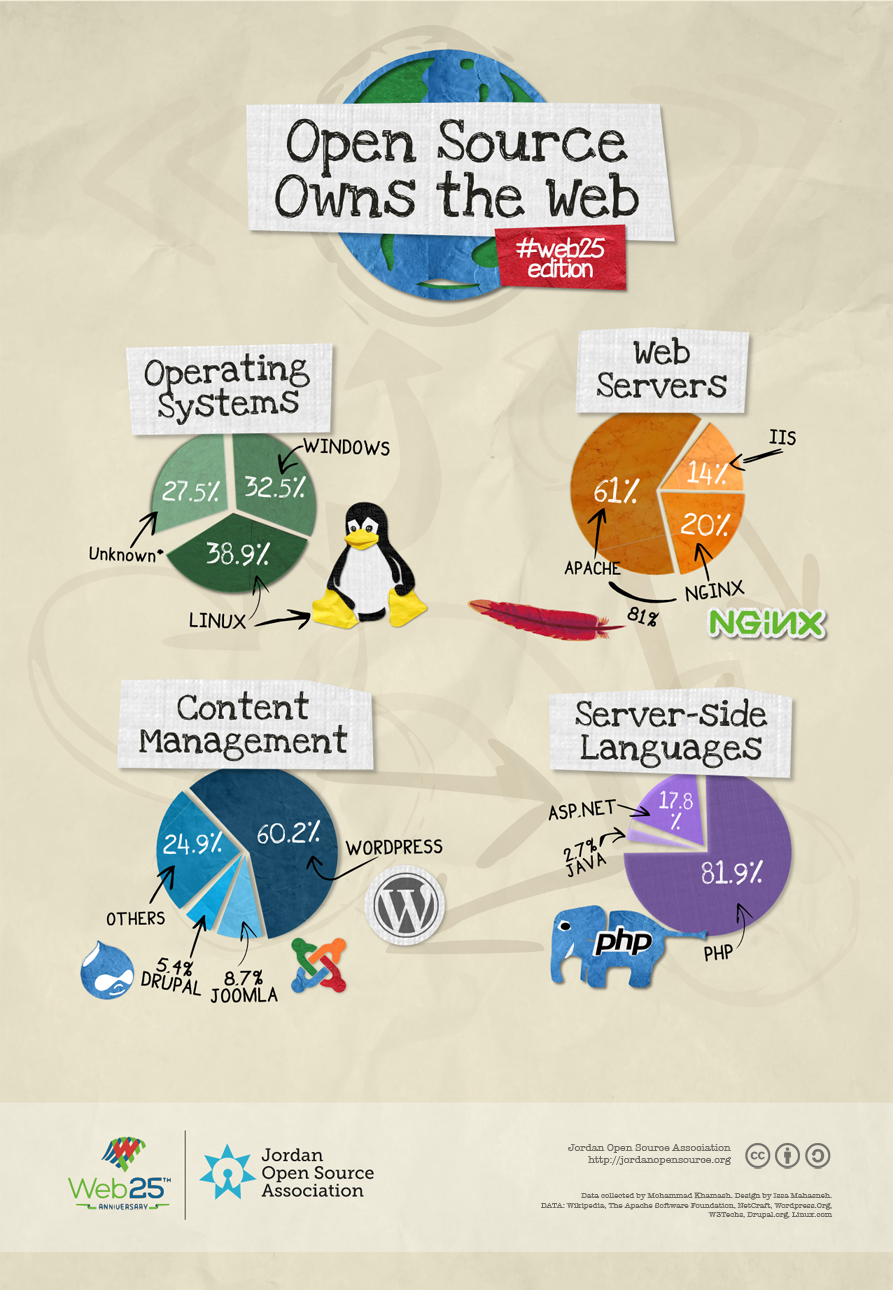(This post was published by the Jordan Open Source Association (JOSA) on March 12, 2014)
By Mohammad Khammash*
In my previous post about the use of Open Source on the web, dated 2010, I argued that Open Source software is the backbone of the Web, giving life to web server infrastructure and operating systems and running most of the websites you visit. Today, three years later, Open Source is even more used and loved by people building and developing the web.
Starting with the operating systems powering the web, GNU/Linux is still dominating that market share. Based on statistics provided by W3Techs, Linux is running more than 38.9% of all the web servers. We used the same statistics for the 2010 post, when they were based on the top 1 million sites. They have now widened their sample base to cover 10 million sites.
Since a lot of web servers recently hide their underlying operating system (often for security reasons), these statistics show that 28% of the web servers are running an operating system that can be classified as unknown/undiscoverable. Based on the previous (2010) statistics, when Linux had a percentage of 60%, we can guess that most of these machines are running Linux as well.
Three years were enough to generate a more substantial change in Web server software. A new-comer has taken the second place from Microsoft IIS. It is another open source web server called Nginx, and it now has a 19.9% share.
This was not a loss for Apache. On the contrary, Apache improved a little by taking 61% (+1% from 2010); Microsoft’s web server software IIS is now left with 14.2% (-5.8%) of market share.
Regarding web development, and in terms of server-side languages, Open Source PHP programming language has completely taken over, with an astonishing 81.9% (in 2010 it was the language of choice for 75% of the websites). Java, an open source programming language as well, is running nearly 3% of the web, while proprietary ASP.NET has a percentage of nearly 18%.
For most developers, writing code from scratch is not the most efficient way to build software, you would be reinventing the wheel over and over again. Usually they will use ready libraries, frameworks and, in the case of web development, they would often use a Content Management System (CMS).
So, what happened in the period from 2010 to 2014 to Open Source Content Management Systems? They definitely became even more popular with developers; with WordPress, Joomla, Drupal owning 60.2%, 8.7%, 5.4% respectively of the overall use of CMSs. Jointly, they have 74.3% of the market.
*Mohammad Khammash is vice president of the Jordan Open Source Association
Feature image above from Shutterstock.








